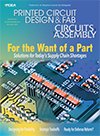ROI

We must retain our new agility even after the pandemic ends.
Nothing makes you flexible like a crisis. Yet, as rough as it can be for a person to quickly shift gears, it is significantly more daunting for a corporation to do so.
The entirety of my working career, the mantra of any good business consultant or culture guru has been be flexible and embrace change. Whether an organization is implementing a TQM (total quality management) plan or struggling with financial survival because “plan A” no longer works, embracing flexibility and rapid change is never easy – and often unsuccessful. The larger the organization, the harder it can be. Embracing change and becoming flexible often only occurs when no other option remains, or in short, extinction awaits.

It’s time to work with your employees toward reopening our doors to the world.
As the second half of this most extraordinary year unfolds, I keep thinking of all the things I had planned, hoped or expected to accomplish during the first half that now are on the overly long “to do” list. As we try to get back in the proverbial saddle and focus on what we can do within the confines of various local and national government pandemic restrictions and reopening timelines, my priorities are reengaging with employees, customers, suppliers and industry events.
Each industry and company has issues to work through, whether it is bringing back furloughed or terminated staff, or just figuring out whether and how to integrate work-from-home into a long-term employment scenario. In all cases, employee reentry must be dealt with quickly to rebuild the sense of corporate community and possibly build an even greater sense of team.
To continue reading, please log in or register using the link in the upper right corner of the page.

Working from home brings many Covid epiphanies.
As I reluctantly get used to social distancing, wearing face masks in public and continually washing my hands, many “aha!” moments have occurred. These have been about the new realities of dealing with the global disruption from Covid-19, as well as the changes we will most likely live with once we’ve survived the pandemic, or at least the first round of it. In no particular order, they include:
Zoom, Zoom, ZOOM! I am not tech savvy or social media conscious, so it should be no surprise that three months ago I had never heard of Zoom. I know about it now! I spend a good portion of each day, including weekends, on a Zoom “call.” At first it was family trying to connect from the various places they were hunkered down. But then I began receiving requests from customers and suppliers to schedule a Zoom meeting to discuss one or another thing. Zoom enables those working remotely to participate with the few still working out of their office or factory. Zoom is user-friendly, and unlike WebEx, easier for those working at home to manage.

Motivated by fear, businesses are valuing creativity as never before.
Over the past 60 to 90 days, I am sure I have heard the term “the new normal” at least a thousand times. Before Covid-19 has run its terrible course, I fully expect to hear it at least a zillion more. But what exactly is “the new normal?”
Sometimes global events become a catalyst for change. Events like the Great Depression and World War II had dramatic, difficult and often devastating impacts on the world. However, those impacts were mostly temporary reactions to transient events, like the aftermath of a very bad storm. Covid-19 is different, which makes trying to visualize and comprehend events, both in the now and the future, so difficult.
Covid-19 truly levels the playing field. Everyone on earth will at some point be impacted, regardless of gender, political orientation, geography, socioeconomic status or faith. Everyone is at risk, and everyone will be impacted in similar ways. That differs from past global events that typically were the cause of regional wars (even WWII did not impact all countries), economic downturns, political eruptions, or local plagues. We really are all in this together.

Will the latest pandemic spur mass change in communications?
Global events sometimes become the catalyst for widespread change. In the world of technology, Covid-19, also known as the coronavirus, may be such an event.
Over the decades our industry has been an integral part of developing, refining and establishing many cost-effective and reliable technologies, perhaps best illustrated by improvements in communications. These improvements have not just been about broadcasting voice with higher fidelity in smaller packages, or integrating photography into word processing software, with easier user interfaces. Thanks to technology, the world of communications has been developing into much more: real-time, interactive, and transportable.
The combination of higher capacity data storage in smaller and far less expensive packages and fast and reliable wireless bandwidth, available virtually anywhere, matched with camera and microphone technology that makes the smallest device sound crystal clear and picks up the smallest sound or sight from incredibly long distances, is just part of the dramatic evolution of communications technologies.

Disaster planning should be part and parcel of our business toolkit.
With only two months of the year behind us, it may be prudent to take any and all business plans you had and rip them up.
Entering a new year is always exciting, when embarking on interesting initiatives that will generate greater profits. Regrettably, sometimes disruptions sideline those exciting new thoughts, replaced by triage efforts that were never in your plans. This year that disruptive event is the coronavirus, and businesses are trying to work through a potentially altered global supply chain.
First and foremost, the coronavirus is just that: a virus – a highly contagious disease debilitating thousands around the world who have or will contract it. Our first thoughts must be with the victims who are infected, hoping they recover. And yes, other viruses and diseases over the years have wreaked havoc on various locations, countries and peoples. By itself, the coronavirus should not derail business planning, business plan execution, or business itself. However, sometimes “things” happen!
Press Releases
- Altus Group Expands Aftersales Team to Its Largest Size to Date
- Incap Estonia Invests in New Flying robe System to Advance Production Performance
- Critical Manufacturing Partners with Canonical to Expand Cloud-Native Deployment Options for Manufacturers
- Heller Industries Becomes the Latest Partner to Join THE SMT FUTURE EXPERIENCE


